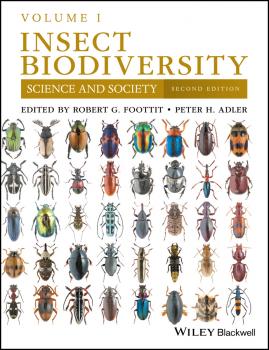ТОП просматриваемых книг сайта:
Peter Adler H.
Список книг автора Peter Adler H.Аннотация
Cutting, burning, branding, and bone-breaking are all types of self-injury, or the deliberate, non-suicidal destruction of one’s own body tissue, a practice that emerged from obscurity in the 1990s and spread dramatically as a typical behavior among adolescents. Long considered a suicidal gesture, The Tender Cut argues instead that self-injury is often a coping mechanism, a form of teenage angst, an expression of group membership, and a type of rebellion, converting unbearable emotional pain into manageable physical pain.Based on the largest, qualitative, non-clinical population of self-injurers ever gathered, noted ethnographers Patricia and Peter Adler draw on 150 interviews with self-injurers from all over the world, along with 30,000-40,000 internet posts in chat rooms and communiqués. Their 10-year longitudinal research follows the practice of self-injury from its early days when people engaged in it alone and did not know others, to the present, where a subculture has formed via cyberspace that shares similar norms, values, lore, vocabulary, and interests. An important portrait of a troubling behavior, The Tender Cut illuminates the meaning of self-injury in the 21st century, its effects on current and former users, and its future as a practice for self-discovery or a cry for help.
Аннотация
Insect Biodiversity: Science and Society brings together leading scientific experts to assess the impact insects have on humankind and the earth’s fragile ecosystems. It examines why insect biodiversity matters and how the rapid evolution of insect species is affecting us all. Insects and related arthropods make up more than 50 percent of the known animal diversity globally, yet a lack of knowledge about insects is hindering the advance of science and society. This book explores the wide variety in type and number of insect species and their evolutionary relationships. Case studies offer assessments on how insect biodiversity can help meet the needs of a rapidly expanding human population, and also examine the consequences that an increased loss of insect species will have on the world. The book concludes that a better understanding of the biology and ecology of insects is the only way to sustainably manage ecosystems in an ever changing global environment.
Аннотация
Volume Two of the new guide to the study of biodiversity in insects Volume Two of Insect Biodiversity: Science and Society presents an entirely new, companion volume of a comprehensive resource for the most current research on the influence insects have on humankind and on our endangered environment. With contributions from leading researchers and scholars on the topic, the text explores relevant topics including biodiversity in different habitats and regions, taxonomic groups, and perspectives. Volume Two offers coverage of insect biodiversity in regional settings, such as the Arctic and Asia, and in particular habitats including crops, caves, and islands. The authors also include information on historical, cultural, technical, and climatic perspectives of insect biodiversity. This book explores the wide variety of insect species and their evolutionary relationships. Case studies offer assessments on how insect biodiversity can help meet the needs of a rapidly expanding human population, and examine the consequences that an increased loss of insect species will have on the world. This important text: Offers the most up-to-date information on the important topic of insect biodiversity Explores vital topics such as the impact on insect biodiversity through habitat loss and degradation and climate change With its companion Volume I, presents current information on the biodiversity of all insect orders Contains reviews of insect biodiversity in culture and art, in the fossil record, and in agricultural systems Includes scientific approaches and methods for the study of insect biodiversity The book offers scientists, academics, professionals, and students a guide for a better understanding of the biology and ecology of insects, highlighting the need to sustainably manage ecosystems in an ever-changing global environment.
Аннотация
Volume One of the thoroughly revised and updated guide to the study of biodiversity in insects The second edition of Insect Biodiversity: Science and Society brings together in one comprehensive text contributions from leading scientific experts to assess the influence insects have on humankind and the earth’s fragile ecosystems. Revised and updated, this new edition includes information on the number of substantial changes to entomology and the study of biodiversity. It includes current research on insect groups, classification, regional diversity, and a wide range of concepts and developing methodologies. The authors examine why insect biodiversity matters and how the rapid evolution of insects is affecting us all. This book explores the wide variety of insect species and their evolutionary relationships. Case studies offer assessments on how insect biodiversity can help meet the needs of a rapidly expanding human population, and also examine the consequences that an increased loss of insect species will have on the world. This important text: Explores the rapidly increasing influence on systematics of genomics and next-generation sequencing Includes developments in the use of DNA barcoding in insect systematics and in the broader study of insect biodiversity, including the detection of cryptic species Discusses the advances in information science that influence the increased capability to gather, manipulate, and analyze biodiversity information Comprises scholarly contributions from leading scientists in the field Insect Biodiversity: Science and Society highlights the rapid growth of insect biodiversity research and includes an expanded treatment of the topic that addresses the major insect groups, the zoogeographic regions of biodiversity, and the scope of systematics approaches for handling biodiversity data.




